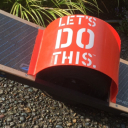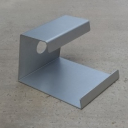Nosedive Video - Why would this happen?
-
Post(s) 0-13 are missing from the archive :(
Know where these posts are? Visit the new forum for how to help get them added :) -
Wrex @kelp 31 August 2016, 00:32 UTC

@kelp said in Nosedive Video - Why would this happen?:
his lead foot clearly loses contact/pressure right before the board disengages at a slow speed. as it is designed to do :D
Yup. Right at timeline 0:21. You can clearly see it.
-
MichaelW 31 August 2016, 03:39 UTC

He raised his foot enough to stop the board. My guess is we just can't see it in the video but he was off both sensors enough to do this... It looked like it was a slight side lift and he shoe must have come off just enough on both to kill the board. At the angle we got in the video you won't be able to see that.
-
fabuz @BriFi 31 August 2016, 04:22 UTC

@BriFi said in Nosedive Video - Why would this happen?:
@hustle Is this you in the video?
It's me lol
-
fabuz @BriFi 31 August 2016, 06:36 UTC

@BriFi All rider's analyses are right...at that time I was a beginner...it never happen to me again with experience...just be careful to not raise your toes on the heel turn and always adjust your sensor foot placement with your speed level.
-
jordo 31 August 2016, 08:34 UTC

You've come a long way @fabuz! It's like an early version of your 'downhill of death'!
-
fabuz 31 August 2016, 13:20 UTC

A good toe turn exemple using only one sensor at 34 sec. :
https://youtu.be/Qfn1gH2RFIg
Very useful for tight j-turn right into 180 at low/medium speed :) -
groovyruvy 31 August 2016, 15:53 UTC

 in this OW ad image (which if it's upside-down I can't do anything about, it's right-side-up on my PC), dude's got both feet off the board, so both sensors on front pad are uncovered. When he lands the board will keep going as long as he lands on the sensors and is moving more than 1/2-MPH. So how come when @BriFi lifts his front foot off one of the sensors the board nose dives? It doesn't look to me like he slowed to less than 1/2-MPH.
in this OW ad image (which if it's upside-down I can't do anything about, it's right-side-up on my PC), dude's got both feet off the board, so both sensors on front pad are uncovered. When he lands the board will keep going as long as he lands on the sensors and is moving more than 1/2-MPH. So how come when @BriFi lifts his front foot off one of the sensors the board nose dives? It doesn't look to me like he slowed to less than 1/2-MPH. -
hustle @groovyruvy 31 August 2016, 16:14 UTC

@groovyruvy Curious about this as well, but I've gone off a curb and my feet came off maybe half this amount (scared the crap out of me) and the board kept going no problem.
-
thegreck @groovyruvy 31 August 2016, 16:45 UTC

@groovyruvy said in Nosedive Video - Why would this happen?:
 in this OW ad image (which if it's upside-down I can't do anything about, it's right-side-up on my PC), dude's got both feet off the board, so both sensors on front pad are uncovered. When he lands the board will keep going as long as he lands on the sensors and is moving more than 1/2-MPH. So how come when @BriFi lifts his front foot off one of the sensors the board nose dives? It doesn't look to me like he slowed to less than 1/2-MPH.
in this OW ad image (which if it's upside-down I can't do anything about, it's right-side-up on my PC), dude's got both feet off the board, so both sensors on front pad are uncovered. When he lands the board will keep going as long as he lands on the sensors and is moving more than 1/2-MPH. So how come when @BriFi lifts his front foot off one of the sensors the board nose dives? It doesn't look to me like he slowed to less than 1/2-MPH.It'll actually give you to the count of one-one-thousand before the motor disengages if your feet come off both sensors while riding at speed. So most of the time when you go over bumps like this, the motor never disengages.
But if it does, it shouldn't matter, because self-balancing doesn't work when you're flying through the air anyway. You just have to be sure when you come down you land on the sensors and keep your balance, and the board will continue riding as normal.
-
Aahxe45 31 August 2016, 17:25 UTC
@groovyruvy I go off of large curbs and 3 foot + drops all the time where my feet come off the board and like @thegreck said as long as you land back on the sensors and keep your balance the board will continue to move. Trying to perfect a shovit at the moment and the hardest part is getting my foot to land back on the sensor. Really need to start recording my rides.
-
thegreck @ahxe45 31 August 2016, 18:09 UTC

@ahxe45 Oh man, good luck with the shovit, and I'd love to see footage when you perfect it! By far one of the coolest looking tricks possible on this beast, but I'm too scared I'm going to land weird and twist an ankle, or crack one on the frame to try it.
-
Aahxe45 31 August 2016, 18:19 UTC
@thegreck I have busted up my ankles pretty bad a few times but I am getting close.
-
BBriFi 31 August 2016, 18:38 UTC
@ahxe45 What's the Shovit trick? Any videos online so we can see?
-
BBriFi @fabuz 31 August 2016, 18:42 UTC
@fabuz I'm pretty confused here. Saw your video of the one sensor turn. So you can have one sensor pressed and it won't nosedive? From the looks of your nosedive video you had one sensor pressed. Please clarify. Thanks!
-
hustle @BriFi 31 August 2016, 18:48 UTC

@BriFi If you're going too slow on one sensor it cuts off.
.5 mph or slower you need both sensors pressed
.6 mph or faster you can use only one. I try and always have my feet on both though, especially when dropping speed. -
thegreck @BriFi 31 August 2016, 18:53 UTC

@BriFi said in Nosedive Video - Why would this happen?:
@ahxe45 What's the Shovit trick? Any videos online so we can see?
It's when you hop off the board and spin it, then land back on it. You can see a few here... plus what can happen if you don't land it right: https://www.youtube.com/watch?v=3WpGqiDLXg0
-
groovyruvy @hustle 31 August 2016, 18:53 UTC

@hustle do you know where exactly the sensors are located under the tape?
-
thegreck @groovyruvy 31 August 2016, 18:55 UTC

@groovyruvy said in Nosedive Video - Why would this happen?:
@hustle do you know where exactly the sensors are located under the tape?
You can see 2 separate blue rectangles on one side of the deck. Imagine making an X on each one, corner to corner. The sensors are where the lines of each X intersect. They're pretty small.
-
Aahxe45 31 August 2016, 19:18 UTC
@BriFi watch the video @thegreck posted and that is pretty much the idea. I can do it on flat land 50% of the time but I am trying to master going off of a ledge and doing it midair. needless to say I have some pretty nice battle scars.
-
groovyruvy @thegreck 31 August 2016, 19:19 UTC

@thegreck so dead center in each of the blue rectangles, thanks! I don't suppose you know the dims of each sensor?
-
thegreck @ahxe45 31 August 2016, 19:20 UTC

@ahxe45 Mid-air off a ledge??? Badass!! I gotta see that video, man.
-
Aahxe45 31 August 2016, 19:26 UTC
@thegreck I will get some footage up sometime soon but I didn't really want to bother until I at least land it a few times. I've been skating my whole life and would say I am halfway decent. The hardest part with the onewheel is that it is very heavy and getting it to spin in the proper orientation without flipping on its side or upside down is really hard. Even when I get it to do a perfect spin trying to re-orient my feet is even harder.
-
thegreck @ahxe45 31 August 2016, 20:24 UTC

@ahxe45 Respect, dude. I can't imagine even imagining attempting that one.
-
hustle @groovyruvy 31 August 2016, 20:49 UTC

@groovyruvy said in Nosedive Video - Why would this happen?:
@hustle do you know where exactly the sensors are located under the tape?

So - the white is actually clear. The black border is accurate. It's a thin piece of plastic, one piece. Black border over the entire thing. In the center of either the left half or right half (I don't remember, sorry), there is a small piece of circuitry that is attached to the bottom part of the plastic and goes down under the wood panel that the grip and sensor sits on. Having looked at it, I have ZERO idea how it knows which half is being pressed, but I assume the black border has something to it. I apologize, I wasn't really paying attention as I was just trying to get it gripped so I could get back out there.
-
groovyruvy @hustle 31 August 2016, 21:17 UTC

@hustle awesome details. And nice grip work!
-
BBriFi @thegreck 31 August 2016, 21:42 UTC
@thegreck Crazy! I still need to learn to ride switch before I attempt that one.
-
mrb @thegreck 7 September 2016, 01:14 UTC

@thegreck said in Nosedive Video - Why would this happen?:
...the board can only detect the tilt of the board and has no idea where the person's center of mass is<
are you sure about this? aren't there pressure pads under the footpads?
-
thegreck @mrb 7 September 2016, 02:21 UTC

@mrb Yes, but the pressure pads only know if something is pressing on them or not, they don't even measure how much pressure. You can move your center of mass anywhere you want and the board won't do anything until you actually tilt the deck.
-
mrb 7 September 2016, 03:30 UTC

@thegreck
the pesky blue sensor strip is unnecessary in any case--but if the pressure pads aren't weighing the rider then what's their fumction?
-
thegreck @mrb 7 September 2016, 14:02 UTC

@mrb They're both just on/off switches and their function is simply to detect whether or not there's a person standing on the board. You can find videos on the forum of people who had faulty sensors, and when the board tries to self-balance without the weight of a person on it, it's pretty ugly. Just a lot of bucking and wheel spinning.
The original pre-Kickstarter prototype had an actual button you had to depress with your foot, but then they came up with the dual-sensor idea which is a smarter and less-conspicuous solution. And the fact that only one of the sensors needs to be depressed once your going over 0.05mph makes accidental motor disengagement less likely while riding.
-
thegreck @mrb 7 September 2016, 14:12 UTC

@mrb said in Nosedive Video - Why would this happen?:
@thegreck
the pesky blue sensor strip is unnecessary in any case--but if the pressure pads aren't weighing the rider then what's their fumction?
Also, the blue strip is just paint on the griptape, to show you where the sensors are located, which is under the griptape. I don't think any of it is unnecessary.
-
groovyruvy @thegreck 7 September 2016, 14:30 UTC

@thegreck agreed. IMO it would really be nice if they marked (maybe with a second color / inset box) the actual sensors, so you could be certain you're covering them. @MichaelW explained to us that each of the sensors is basically in the middle of each of the 2 blue square-ish shaped boxes. I can figure that out no problem, but when you're going 15mph it would be nice to be able to glance down and see if you're on or off one or both of the exact spots where the sensors are.
-
sonny123 @thegreck 7 September 2016, 14:38 UTC

@thegreck Had a pretty good diagram of the sensors coverage.
I tend to ride with my feet farther apart and front foot angled almost 45 degree.
I was able to move the pads 1" out on each giving plenty of room.
Closed the gap with gorilla tape.
-
mrb 7 September 2016, 14:54 UTC

@thegreck
this board has two wooden footpads. in one footpad under the blue paint there are two punkass switches known around here as sensors.
i can't open my board because i'm always standing on it, but i think that under both footpads are pressure plates. these robust digital scales would weigh the user from both sides and this ratio would be the input used for both balancing and control input (gas/brakes).
if there are two pressure plates then the sensors are unnecessary as the plates could handle rider presence more conveniently and reliably.
is all physical input on the board collected solely by gyros?
-
thegreck @mrb 7 September 2016, 15:16 UTC

@mrb Yes, it's all gyros and accelerometers. The technology behind the Onewheel is the same as those 2-wheeled hoverboards, which is the same as the Segway, which is the same as any self-balancing device. They all use inverted pendulum theory, which has been around since the 1970s at least. It's purely based on solving the angle of the upright by moving the base under it:
https://www.youtube.com/watch?v=D3bblng-KccIt's just like balancing a broomstick on the palm of your hand. You don't need to know how much the broomstick weighs, you just have to move your hand under it when it starts to fall over.
-
mrb @thegreck 7 September 2016, 15:54 UTC

@thegreck
thanks for your reply.
the information from pressure plates would use the same human pendulum to balance the board and the physics of it would be the same. however, the computer would account for the distribution of weight aside from board pitch.
i would guess that Onewheel uses the exact same reverse-engineered balancing code used by all the devices you mentioned, without steering logic and with values changed to match the hardware.
i had an apparently wrong idea that all these devices weigh riders and reconcile this information with that from on-chip gyros.
-
thegreck @mrb 7 September 2016, 16:27 UTC

@mrb They didn't have to reverse-engineer the other self-balancing devices and strip out the steering logic. The code for self-balancing has been around for decades, as have DIYs for making your own "Onewheel" (as far back as 7 years before the release of the Onewheel). All of the self-balancing devices just used this code and made changes based on the device they planned to use it on.
At the end of that video I shared, he demonstrates putting containers of liquids of various sizes and weights on top of the inverted pendulum, and the unit has no problem keeping them balanced. Weight doesn't even come into play, only speed and angle. There's no reason to muddy up the works with adding scales under each footpad (just another thing to break) when all you need is a simple on/off switch just to let the board know someone is on it.